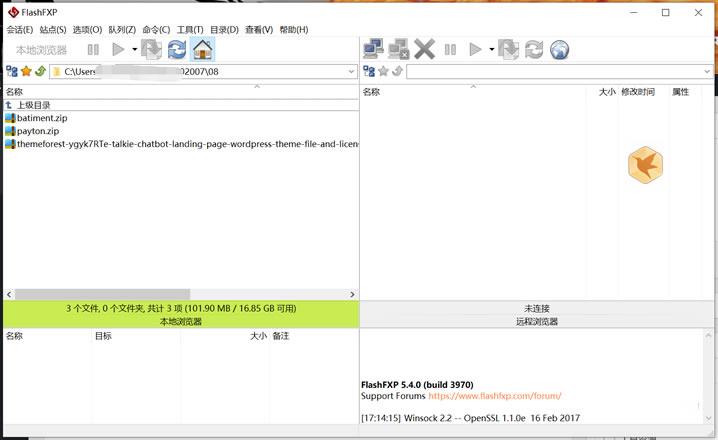提纲2009年版三级网络技术复习提纲—第七章 服务器操作系统(2009 edition three level network technology review outline - Chapter seventh server operating system)
2009年版三级网络技术复习提纲—第七章服务器操作系统2009edition three level network technology review outline -
Chapter seventh server operating system
The 2009 edition of three network technology review outline -Chapter seventh server operating system.Txt
The seventh chapter is the analysis of network management andnetwork security: this part is the key, the general 6multiple-choice questions and fill in 2~3, about 10-12.Pay attention to the problem:
1, the five functions of network management: configurationmanagement, faul t management, performance management,accounting management and security management, and the role ofmanagement.
2, the level of information security, A1 security standards inthe United States Department of defense is the highest levelof security.
3, the basic elements of network security: confidentiality,integrity, availability and legitimacy, and the correspondingfour basic threat, and the threat can realize the commonknowledge into threats and threats into.
4, security is a concrete manifestation of security threats,interruption, interception, modification and fabrication.5, the introduction of the related knowledge of encryption
technology.
The principle of digital signature and authenticationtechnology in 6, and the difference between it and messageauthentication.
7, the firewall can only prevent violations of external netsintranet.
1, network management includes five functions: configurationmanagement, faul t management, performance management,accounting management and security management.
Configuration management is responsible for networkestablishment, service deployment and configuration datamaintenance function: list management, resource provisioning,service provisioning;
Fault management general steps: find fault, judge fault, faultisolation, fault recording, fault repair; at present is:detection, isolation and correction of fault;
Billing management goal is to use the tracking of individualand group users of the cyber source, charge a reasonable feefor the.
Performance management aims to maintain the quality of serviceand network efficiency. Performance management includingperformance testing, performance analysis, performancemanagement and control function.
Safety management goal is in accordance with certain controlstrategies for cyber source access, ensure that importantinformation will not be unauthorized user access, and preventnetwork by malicious or unintentional attacks.
The target and the network administrator 2, network managementresponsibilities:
Target: A, reduce downtime, shorten the response time andimprove the utilization rate of equipment; B, reduce operatingcosts, improve efficiency; C, reduce or eliminate the networkbottleneck; D, make the network more easy to use, safe andreliable; e network.
Responsibilities: planning, construction, maintenance,expansion, optimization and troubleshooting. Not including thepreparation of applications, it is the programmer' sresponsibility.
3, a manager/agent model : management is essentially a set ofapplications running on the computer operating system,management information collection, from the agency forprocessing, to obtain valuable management information, toachieve the purpose of management. Agent is located in manageddevices, it comes from the management commands or informationrequests into the device specific instruction, completemanagement instructions, or return its equipment information.Between the manager and agent information exchange can bedivided into two types: the agent management operations frommanagers; from agents to managers of the event notification.
4, network management protocol
(1) the concept is: information between network manager andagent specification.
(2) the network management protocol is a high-level networkapplication protocol, it is based on the physical network andcommunication protocol based on network management serviceplatform.
Network management protocol includes: simple networkmanagement protocol SNMP, common management informationservice / protocol CMIS/CMIP (telecommunication managementnetwork commonly used)
The management node is generally workstation class computerapplication oriented, with strong processing ability. Theproxy node can be any type of network node. SNMP is anapplication layer protocol, it uses the service transport layerand network layer to its peer layer information transmission;SNMP uses round robin monitoring method. CMIP has theadvantages of high safety, strong function, not only can be usedfor data transmission management, can also perform certaintasks.
5, information security includes 3 aspects: physical security,security control, security service,
To achieve authenticity, confidentiality, integrity andavailability of the target;
6, the information security level:
(1) the United States Department of defense Orange BookStandards (_STD) : D1 (standard level computer system withoutverification, such as DOS, Windows3.X, users of Windows95 (notin the working group in Apple, System7.X) ; C1 providesindependent safety protection, it makes users and dataseparation, to meet the needs of independent. The minimumsecurity level C2 level required for handling of sensitiveinformation, further restrict the user to execute commands oraccess to certain file permissions, but also the authenticationlevel, such as UNIX, XENIX, Novell, NetWare system version 3or higher, Windows NT; B1 is the first need a lot of accesscontrol support level. The level of security are confidential,secret level. The B2 level of all objects in a computer systemto add tags, and to the security level distribution equipment.B3 requires the user workstation or terminal through trustedway to connect to the network system, and the level of securitysystem to protect the hardware store, security key componentsof B3 system must understand the access to all of the objectto the subject. The highest level of security A1, show that thesystem provides the most comprehensive security) .
(2) the computer information security level in China: selfprotection, guidance, supervision and protection levelprotection, mandatory protection level, the control level ofprotection.
8, network security
(1) objective: transmission security storage security and
information; the basic elements of the realization ofinformation confidentiality, integrity, availability andlegitimacy.
(2) security threats is the damage caused by a person, thing,thing or concept of a resource of confidentiality, integrity,availability or legitimacy.
(3) security threats are divided into two types of intentionaland accidental. Intentional threats can be divided into twotypes of passive and active.
Basic threat: information disclosure or loss -confidentiality,data integrity, integrity, availability, non - denial ofservice access legitimacy;
Infiltration of threat: counterfeiting, bypass control,authorization assault;
Implant threat: Troy Trojan, trapdoor;
The potential threat of eavesdropping, traffic analysis,personnel negligence, cleaning media.
(4) security attacks: from unauthorized entities have accessto resources, confidentiality of the attack; modification isunauthorized entities not only get access, but alsoaltered theresources of the integrity of the attack; interruption isdestroyed or become the system resources can not be used, isthe availability of the attack; it is unauthorized entitiesinto the fake object to the system, is on the legitimacy of the
attack.
(5) active attack and passive attack:
The characteristics of passive attacks is to monitor or monitor.The aim is to obtainthe information beingtransmitted. Passiveattacks: disclosure of information content and trafficanalysis etc. .
Active attack involves modifying the data stream or create thewrong data flow, it includes camouflage, replay, modifyinformation, denial of service, distributed denial of service.From the perspective of network protocol, the attack methodscan be summarized as: service attack and non attack service.Service attack is for a specific network services (such asE-mail (Telnet, FTP, mail bomb) , HTTP attacks) . Non serviceattack is not for a specific application service, but the lowlayer network layer protocol based on the. Non service attackby agreement or protocol when the operating systemvulnerabilities to achieve the purpose of attack, is a moreeffective means of attack, such as source routing attacks andNetXBay spoofing, etc. .
(9) safety strategy: the majesty of the law, advancedtechnology, strict management (10) safety managementprinciples: the principle of people is responsible for alimited term, the principle, the principle of separation ofduties
9, encryption technology
(1) several related concepts: called plaintext messages needto be hidden. The plaintext is transformed into another hiddenform called ciphertext,
This transformation is called encryption, the reverse processof encryption of plaintext is called decryption; a set of rulesfor encryption is called the encryption algorithm, a set ofrules by the cipher decryption called decryption algorithm;encryption algorithm and decryption algorithm is usuallycarried out in a group under the control of the key, theencryption algorithm used by the key as the encryption key,using the decryption key is called the decryption key encodingis used; password encryption, cryptanalysis (exhaustiveanalysis, to try all possible half) is used to decrypt, is acategory of cryptography.
(4) classification system password:
According to the plaintext into ciphertext operation type isdivided into: substitution or replacement of the password andthe password.
According to the number of keys is divided into: symmetriccryptography and asymmetric cryptography.
(5) the data encryption technology can be divided into 3categories: symmetric encryption, asymmetric encryption andnon reversible encryption.
Symmetric encryption for data encryption or decryption using
a single key, also known as single key encryption, passwordencryption, or conventional secret key encryption algorithm,such as DES.
Asymmetric encryption algorithm is characterized by two keys,only two collocation use to complete the encryption anddecryption process. Another usage of asymmetric encryption iscalled a"digital signature" is the commonly used RSA algorithmand digital signature algorithm DSA.
Irreversible encryption algorithm is a one-way hash algorithm,feature is encryption process does not require a key, and theencrypted data cannot be decrypted, only the same input datathrough the irreversible algorithm to the same encrypted datathe same.
(6) encryption scheme is that the two situations of safety:One is to decipher the ciphertext encrypted information exceedsthe cost of the value; two is valid to decipher the confidentialinformation over time.
(7) part of the symmetric encryption system model: encryptionalgorithm, encryption key, plaintext, ciphertext anddecryption algorithm.
Symmetric encryption is also called conventional encryption,single key encryption, secret key encryption, there are twosecurity requirements: need a strong encryption algorithm; thesender and recipient must be in a safe way to obtain a copy ofthe secret key, must ensure the security of the key. Its
- 提纲2009年版三级网络技术复习提纲—第七章 服务器操作系统(2009 edition three level network technology review outline - Chapter seventh server operating system)相关文档
- 投标报价前请认真阅读,如递交投标文件即视为认可本文件的所有条款.
- 顺义区服务器版操作系统
- 磋商服务器版操作系统
- 投标人服务器版操作系统
- 测量【精选】dell服务器r710安装centos版linux操作系统
- 服务器选择Ubuntu服务器版操作系统的六大理由
FlashFXP FTP工具无法连接主机常见原因及解决办法
目前,我们都在用哪个FTP软件?喜欢用的是WinSCP,是一款免费的FTP/SFTP软件。今天在帮助一个网友远程解决问题的时候看到他用的是FlashFXP FTP工具,这个工具以前我也用过,不过正版是需要付费的,但是网上有很多的绿色版本和破解版本。考虑到安全的问题,个人不建议选择破解版。但是这款软件还是比较好用的。今天主要是遇到他的虚拟主机无法通过FTP连接主机,这里我就帮忙看看到底是什么问题。一...

百纵科技(1399元/月)香港CN2站群232IP
湖南百纵科技有限公司是一家具有ISP ICP 电信增值许可证的正规公司,多年不断转型探索现已颇具规模,公司成立于2009年 通过多年经营积累目前已独具一格,公司主要经营有国内高防服务器,香港服务器,美国服务器,站群服务器,东南亚服务器租用,国内香港美国云服务器,以及全球专线业务!活动方案:主营:1、美国CN2云服务器,美国VPS,美国高防云主机,美国独立服务器,美国站群服务器,美国母机。2、香港C...

提速啦母鸡 E5 128G 61IP 1200元
提速啦(www.tisula.com)是赣州王成璟网络科技有限公司旗下云服务器品牌,目前拥有在籍员工40人左右,社保在籍员工30人+,是正规的国内拥有IDC ICP ISP CDN 云牌照资质商家,2018-2021年连续4年获得CTG机房顶级金牌代理商荣誉 2021年赣州市于都县创业大赛三等奖,2020年于都电子商务示范企业,2021年于都县电子商务融合推广大使。资源优势介绍:Ceranetwo...

-
permissiondeniedpermission denied 怎么解决今日油条天天吃油条,身体会怎么样西部妈妈网烟台分类妈妈网 分类妈妈网的前2个字什么?关键字关键词编故事lunwenjiance知网论文检测查重系统同ip域名同IP网站具体是什么意思,能换独立的吗同一服务器网站同一服务器上可以存放多个网站吗?avtt4.comCOM1/COM3/COM4是什么意思??/www.zhiboba.com网上看nbasodu.tw台湾人看小说的网站是